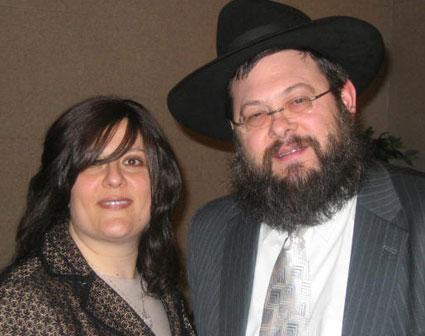I went shul hopping in Rochester, MN.
The first synagogue I tried was a reform one. It had a big beautiful, modern building that looked promising. On Shabbat morning, my friends dropped me off. I told them the service would probably last three hours.
As soon as I walked in the building, the rabbi said, “The service will be cut short today; I am leaving for the airport right after.”
I looked at her in total shock. She, the rabbi, was taking a plane on Shabbat? This synagogue was way too liberal for me. But since I was already there, I decided to stay for the service.
There were only two other people in the sanctuary: a woman and her soon-to-be-Bar-Mitzvah son. The service was a blur. We had a quick kiddush afterwards of grape juice and cookies. Then I left. I had two hours to kill before my friends returned.
For my next Shabbat in Minnesota, I chose to go to a more traditional synagogue. I found the Chabad-Lubavitch center on 2nd street. The center was a beige two-story house with a giant menorah on the front lawn. The black menorah must have been one-story high.
I pushed the door open _ ignoring the door bell since it was Shabbat _ and entered. There was a big open room on my left, divided by a carved wall partition, the mechitza, separating the men from the women. The rabbi came and welcomed me, showing me the women’s section. I was the first woman. There were two narrow tables with blue siddurim on them. Through the mechitza on my right, I could see the men davening (praying).
The rabbi was funny. Throughout the service, he told stories, made jokes while we waited for more men to arrive and make the necessary minyan (the quorum of 10 Jewish adults) for a complete service.
“We’re going to have a juggler today,” the rabbi announced.
A few minutes later, the young man showed up, soaked to the bone. He had been caught in the downpour outside.
“Do you want a siddur? Do you want a towel?” the rabbi joked.
The juggler made up the sixth men, not enough for a minyan (women did not count in an orthodox shul). So we read the parashah of the week from the Chumash, instead of the sefer torah. It was still a good, spiritual service.
Afterward, the rabbi’s wife invited all of us to the kiddush. The table was abundant with salads, gefilte fish, a big bowl of meat and potatoes and homemade challah and chocolate-chip biscotti. There was wine, grape juice, orange juice and even a bottle of vodka. Being somewhat vegetarian and not much of a drinker, I avoided the meat and the vodka and enjoyed the rest.
At the kiddush table, every story was an opportunity to learn and study. We talked about juggling and how it is mentioned in Jewish texts. The rabbi even went and got a book that described the art during the festival of sukkot.
We also talked about the Jews of Congo and my research on the subject. The rabbi asked if I had been to a Chabad center before. I told him once, in Edmonton, Alberta. The rabbi happened to know his colleague in Edmonton. I was amazed to hear he also knew the rabbi in Kinshasa, Congo.
I had a wonderful time at the Chabad center. The warm and welcoming rabbi and his wife can certainly serve as examples to the rest of us Jews. I look forward to returning to their synagogue next Shabbat.

